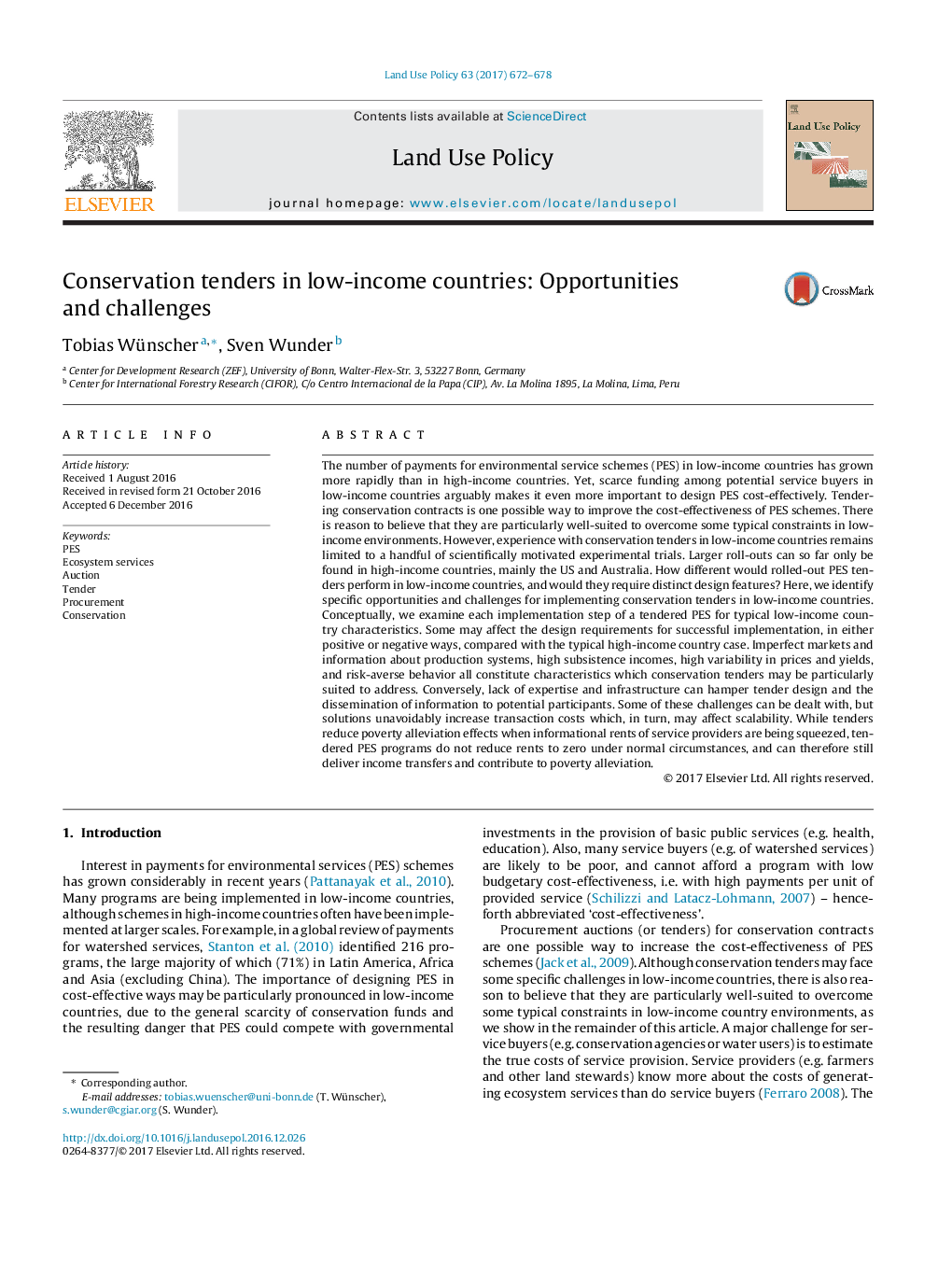| کد مقاله | کد نشریه | سال انتشار | مقاله انگلیسی | نسخه تمام متن |
|---|---|---|---|---|
| 6461114 | 1421820 | 2017 | 7 صفحه PDF | دانلود رایگان |
- A relatively large number of PES schemes operates in low-income countries (LICs).
- The urgency for cost effectiveness in PES is particularly high in LICs.
- Conservation auctions can increase cost effectiveness, yet experience in LICs low.
- We examined opportunities and challenges for auctions in low-income countries.
- We identified their clear potential in LICs, yet the scale is likely constrained.
The number of payments for environmental service schemes (PES) in low-income countries has grown more rapidly than in high-income countries. Yet, scarce funding among potential service buyers in low-income countries arguably makes it even more important to design PES cost-effectively. Tendering conservation contracts is one possible way to improve the cost-effectiveness of PES schemes. There is reason to believe that they are particularly well-suited to overcome some typical constraints in low-income environments. However, experience with conservation tenders in low-income countries remains limited to a handful of scientifically motivated experimental trials. Larger roll-outs can so far only be found in high-income countries, mainly the US and Australia. How different would rolled-out PES tenders perform in low-income countries, and would they require distinct design features? Here, we identify specific opportunities and challenges for implementing conservation tenders in low-income countries. Conceptually, we examine each implementation step of a tendered PES for typical low-income country characteristics. Some may affect the design requirements for successful implementation, in either positive or negative ways, compared with the typical high-income country case. Imperfect markets and information about production systems, high subsistence incomes, high variability in prices and yields, and risk-averse behavior all constitute characteristics which conservation tenders may be particularly suited to address. Conversely, lack of expertise and infrastructure can hamper tender design and the dissemination of information to potential participants. Some of these challenges can be dealt with, but solutions unavoidably increase transaction costs which, in turn, may affect scalability. While tenders reduce poverty alleviation effects when informational rents of service providers are being squeezed, tendered PES programs do not reduce rents to zero under normal circumstances, and can therefore still deliver income transfers and contribute to poverty alleviation.
Journal: Land Use Policy - Volume 63, April 2017, Pages 672-678
